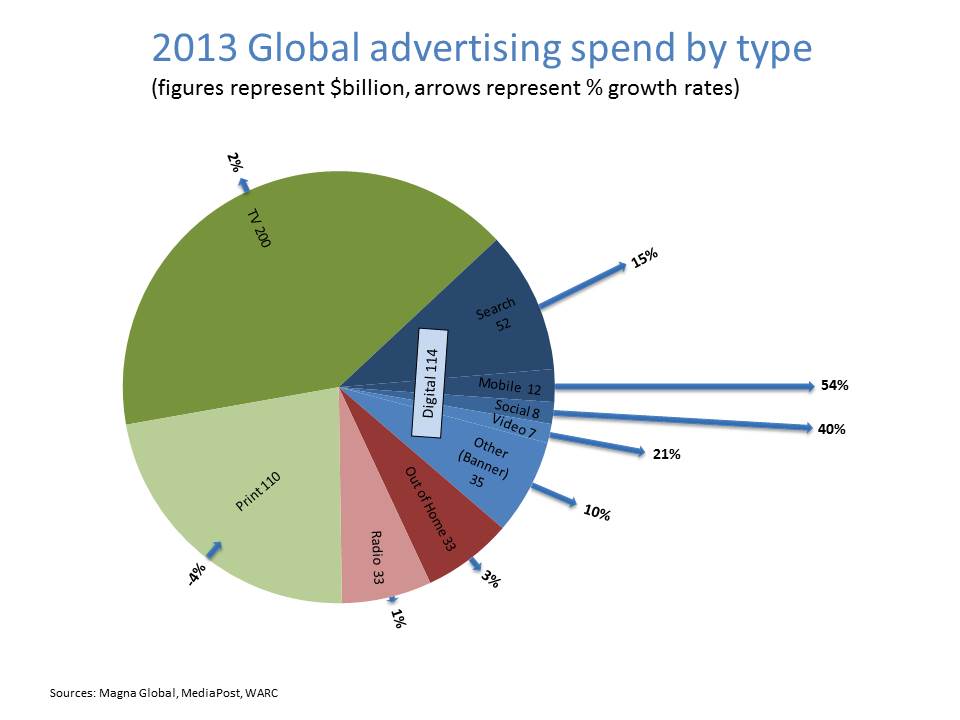 As we rapidly approach the Super Bowl, I’ve been doing quite a bit of thinking about the vast sums spent every year on advertising. Godaddy.com, Budweiser, Miller, GM (and virtually everyone else in the auto industry), Doritos, Coke, Pepsi . . . You name ’em – They’ll be shelling out the cash just like they always do. You’ll have your random celebrity cameos – plenty of action-packed movie previews – countless bikinis – and, of course, endless hints that what you really need are giant cheese-filled sausage roles to go along with your extra large Dominos pizza . . . Hell, the NFL even advertises itself! (Wait – did I forget energy drinks???)
As we rapidly approach the Super Bowl, I’ve been doing quite a bit of thinking about the vast sums spent every year on advertising. Godaddy.com, Budweiser, Miller, GM (and virtually everyone else in the auto industry), Doritos, Coke, Pepsi . . . You name ’em – They’ll be shelling out the cash just like they always do. You’ll have your random celebrity cameos – plenty of action-packed movie previews – countless bikinis – and, of course, endless hints that what you really need are giant cheese-filled sausage roles to go along with your extra large Dominos pizza . . . Hell, the NFL even advertises itself! (Wait – did I forget energy drinks???)
With that in mind, I happened to come across a particularly artful and important article the other day penned by the respected South African public affairs and strategic planning expert Chris Moerdyk. Mr. Moerdyk’s extremely informative website, BizCommunity.com, covers virtually all aspects of international public relations, ranging from rapidly changing fields like tech-based nano-targeting to traditional TV and print advertising. Moreover, he has assembled a seriously impressive group of contributors. I’ll most certainly be adding this website to my personal list of “go-to” Internet destinations.
The article in question entitled, “The Ridiculous Cost of Advertising,” (the headline more or less speaks for itself . . .) addresses and explains a number of issues regarding advertising ROI that I – and I’d imagine LOTS of other executives – regularly question, year after year, although very little seems to actually change. Sure – There’s tons of ink spilled discussing trends like social media and the value of better coordination between marketing and compliance (especially in the financial sector), but the most visible, expensive and ubiquitous forms of communications – print, radio and TV advertising – have retained almost the same level of preeminence they possessed back during the days of “Mad Men.”
The problem, of course, is that while these various types of paid media, at their best, have undoubtedly grown more sophisticated, as Mr. Moerdyk notes, there are still few if any reliable metrics demonstrating that they actually perform their intended functions: basic goals like improved brand loyalty, expanded market-share, reputational protection and increased profitability. Obviously, this isn’t true in every instance and surely some companies/industries do benefit more than others. But the real point is whether anything close to a majority of targeted audiences are even paying attention. According to Moerdyk, at least in the US (and probably elsewhere), the answer is overwhelmingly “NO.”
The sad truth is that advertising has become somewhat analogous to the endless drive for appropriations that fuels our military-industrial complex – something so deeply engrained within each corporation’s culture (and continuously “pushed” by aggressive and highly profitable ad companies) that upper management and boards of directors end up seeing the world just like their Pentagon counterparts: “Of course we have to buy the next generation! We’ll find someone to kill with it eventually . . .” Oh – and if that shiny new weapons system happens have a “minor flaw” (e.g., F-22 PILOTS PASSING OUT DURING PRACTICE FLIGHTS DUE TO A SUDDEN AND UNEXPLAINED DISAPPEARANCE OF OXYGEN . . .), that doesn’t mean we should risk changing the process. After all, “We’ve always done it this way!” And let’s be honest here: whether it works or not, the F-22 does look undeniably awesome.

Where Moerdyk sees hope is that it’s about to become substantially more difficult both for advertisers and their customers to justify pointless expenditures. Why? Because instead of being forced to rely on guesswork (“Wow! - We ran that Super Bowl ad for $3 million and our profits went up! We sure better order a series of follow-ups before the competition beats us to it . . .), new technologies are exponentially improving the ability to analyze: (1) Which ads are getting attention; (2) Who the audience ACTUALLY is; and (3) Not just how perceptions are being changed but, more significantly, whether they are being changed at all. Plus, all of this will increasingly be available in real time.
Moerdyk discusses precisely why these changes are so likely to create a legitimate revolution:
I couldn’t agree more. Let’s hope that things end up moving even faster than Moerdyk suggests. Yes, gathering accurate data will certainly help limit waste but there are already numerous steps companies can take to improve their marketing strategies and tactics.

If you happen to be a decision-making either within a company’s communications department or work directly within the broad universe comprised of PR, public affairs, crisis management and advertising, the primary point I’d make is this: even the most entrenched practices ultimately ALWAYS die out once they’re exposed to the “creative destruction” of capitalism. That’s why the private sector probably has a better shot at changing its ways than the military. (Then again, it’s equally fascinating to me that modern political campaigns are generally using infinitely more advanced network-creation/retention techniques than giant corporations . . .)
Start thinking carefully not just about what you spend and how much – but also about already-existing, more cost-effective alternatives: e.g., earned media campaigns, event planning, mutually reinforcing online tactics and the rapidly growing importance of mobile apps. And finally, take a long hard look at the chart up at the top of this post. Yes. Change is scary. But as far as I’m concerned, it’s a lot less scary than spending hard-earned money (quite possibly) for NOTHING. While traditional advertising’s share of the market – and its role in our popular culture – remain enormous, in this case, change isn’t going to happen somewhere off in the future – This is the moment. It’s happening RIGHT NOW.
Be ready.

